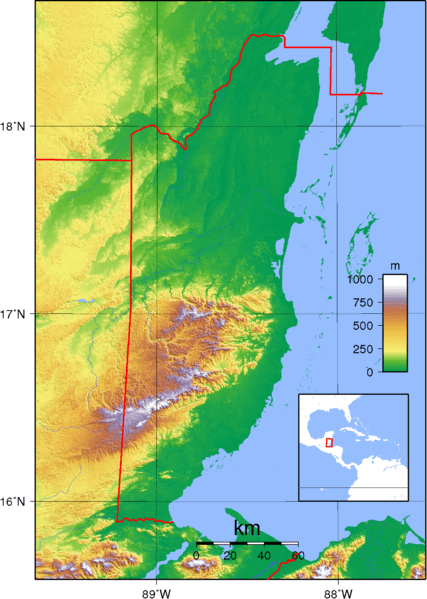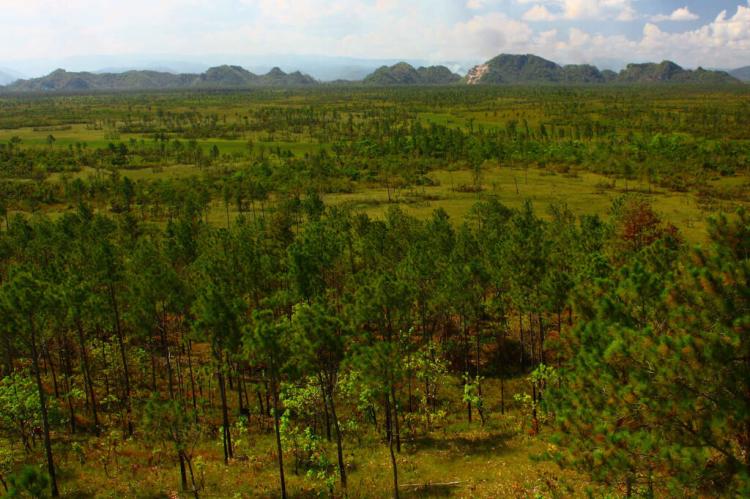Maya Forest and Marine Corridors: Intricately Linked Landscapes
The Maya Forest Corridor is a conservation initiative in Belize to protect and restore critical ecosystems and promote biodiversity. The Maya Mountain Marine Corridor is an initiative that combines conservation efforts beyond the traditional boundaries of terrestrial and marine ecosystems.
Maya Forest and Marine Corridors
Intricately Linked Landscapes in Maintaining Ecological Balance
The Maya Forest and Marine Corridors are conservation initiatives in Belize aimed at protecting and restoring critical ecosystems and promoting biodiversity. These corridors are essential for maintaining the connectivity of habitats and ensuring the survival of various species.
The Maya Forest Corridor and the Maya Mountain Marine Corridor are intricately linked landscapes, each vital in maintaining ecological balance. The forest corridor serves as a crucial habitat for wildlife and supports species that rely on terrestrial and marine environments, such as jaguars and manatees. Simultaneously, the marine corridors are guardians of the water quality in rivers originating from the Maya Mountains, a pivotal component for the overall health of the forest ecosystem.
These two corridors are instrumental in climate change adaptation strategies. The forests within the Maya Mountains act as powerful carbon sinks, capturing and sequestering carbon dioxide from the atmosphere, contributing to the global effort to mitigate climate change. Furthermore, the coral reefs within the marine corridor serve as natural shields, protecting the coastline from the devastating impacts of storm surges. This intricate interplay between terrestrial and marine environments underscores the importance of holistic conservation and exemplifies how nature's systems are interconnected and mutually supportive in safeguarding the planet's health.
Maya Forest Corridor
The Maya Forest Corridor connects the Maya Mountains of Southern Belize and the Selva Maya of Guatemala, Mexico, and Belize. This corridor is crucial for keeping the Maya Forest from being split into smaller fragments. It is essential for the movement of wildlife, such as jaguars, white-lipped peccaries, and Central American spider monkeys. The Maya Forest Corridor Coalition, consisting of local and international partners, is working to protect and restore this critical habitat.
The Maya Forest Corridor Initiative stands as a pioneering conservation endeavor in Belize. Its primary aim is to protect and restore ecosystems, establishing protected areas of immense significance: the Maya Mountain Massif and the Cockscomb Basin Wildlife Sanctuary. This corridor, nestled in the southern reaches of Belize, has captivated global attention due to its innovative and holistic approach to preserving ecological diversity. It distinguishes itself by acknowledging that nature transcends the confines of protected areas and thrives on the interconnectedness between various ecosystems.
Geography and Significance
The Maya Forest Corridor stretches from the Maya Mountain Massif in the west to the Cockscomb Basin Wildlife Sanctuary in the east, creating a vital link between these protected areas. These regions are emblematic of the ecological diversity in Belize and are home to an array of species, including jaguars, pumas, ocelots, tapirs, and countless bird species. The corridor's geographic expanse covers lush tropical forests, winding rivers, and rugged mountain terrain. Its significance lies in preserving these landscapes and the species' genetic diversity.
Conservation Strategies
The Maya Forest Corridor Initiative employs a multifaceted approach to conservation, acknowledging that biodiversity protection extends beyond setting aside land. Some key strategies include:
-
Habitat Protection: The initiative focuses on conserving essential habitats within the corridor. It has established private and public protected areas to prevent deforestation, safeguard wildlife, and maintain biological connectivity.
-
Reforestation and Sustainable Land Management: Reforestation projects are a cornerstone of the initiative. By replanting native tree species, the corridor helps restore degraded landscapes and combat habitat loss. Sustainable land management practices are also promoted to mitigate human impacts.
-
Community Engagement: Local communities are integral to the success of the Maya Forest Corridor. The initiative recognizes the importance of engaging communities in conservation efforts. It works to provide sustainable livelihoods and educational opportunities to residents, ensuring their active involvement in preserving the corridor.
-
Research and Monitoring: Scientific research and monitoring are fundamental components. Tracking the movement of wildlife, studying vegetation dynamics, and assessing the effectiveness of conservation efforts provide valuable insights to refine strategies.
-
Policy Advocacy: The initiative advocates for policies that support conservation, land protection, and sustainable resource management. Collaborating with governmental and non-governmental entities ensures that conservation remains a priority at national and international levels.
International Significance
The significance of the Maya Forest Corridor extends far beyond Belize's borders. It is part of the Mesoamerican Biological Corridor, encompassing numerous protected areas and conservation projects throughout Central America. This regional collaboration recognizes the importance of preserving ecosystem connectivity to maintain biodiversity. The corridor serves as a model for transboundary conservation efforts, sharing lessons and approaches with neighboring countries.

Topography map of Belize depicting the Maya Mountains and Cockscomb Range.
Maya Mountain Marine Corridor
The Maya Mountain Marine Corridor Initiative is a visionary conservation project in Belize that integrates terrestrial and marine ecosystem management. By combining land and sea conservation efforts, this initiative exemplifies a holistic approach to safeguarding biodiversity, preserving critical habitats, and fostering sustainable development.
Situated in the southern part of Belize, this corridor extends from the Maya Mountain Massif to the coastal regions, encompassing land and marine ecosystems. It is a testament to the interconnectedness of ecological systems and the recognition that a comprehensive conservation strategy is vital for the long-term sustainability of ecosystems and communities.
Geography and Significance
The Maya Mountain Marine Corridor encompasses many habitats, including tropical rainforests, coastal wetlands, mangroves, coral reefs, and seagrass beds. This geographic diversity makes the corridor significant, as it connects critical ecosystems across terrestrial and marine environments.
Extending over 400,000 ha (1,000,000 acres) from southwestern Belize's Maya Mountains east to the Caribbean Sea, the corridor is composed of a patchwork of protected areas, including Bladen Nature Reserve, Maya Mountain Forest Reserve, Payne's Creek National Park, Port Honduras Marine Reserve, and Sapodilla Cayes Marine Reserve. The (MMMC) bridges the gap between terrestrial and marine habitats. This connection is essential for the survival of many species, as they rely on terrestrial and marine habitats during their life cycles.
Conservation Strategies
The Maya Mountain Marine Corridor Initiative employs a multifaceted approach to conservation that recognizes the integrated nature of terrestrial and marine ecosystems:
-
Terrestrial and Marine Protected Areas: The initiative establishes protected areas to safeguard critical terrestrial habitats, such as tropical rainforests, and marine ecosystems, like coral reefs. These protected areas ensure that biodiversity is preserved across both environments.
-
Mangrove and Seagrass Restoration: The initiative promotes protecting and restoring mangrove and seagrass habitats, which are vital for coastal ecosystems and act as fish nurseries and natural barriers against storm surges.
-
Mitigation of Pollution: Efforts to reduce pollution from agricultural runoff and other sources help maintain water quality in the coastal areas, which is essential for the health of marine ecosystems.
-
Sustainable Fishing Practices: The initiative promotes sustainable fishing practices that ensure the long-term health of fish populations and the preservation of species vulnerable to overfishing.
-
Marine Protected Areas (MPAs): Establishing MPAs within the corridor is critical to protect marine biodiversity and support the recovery of species such as corals, fish, and sea turtles.
